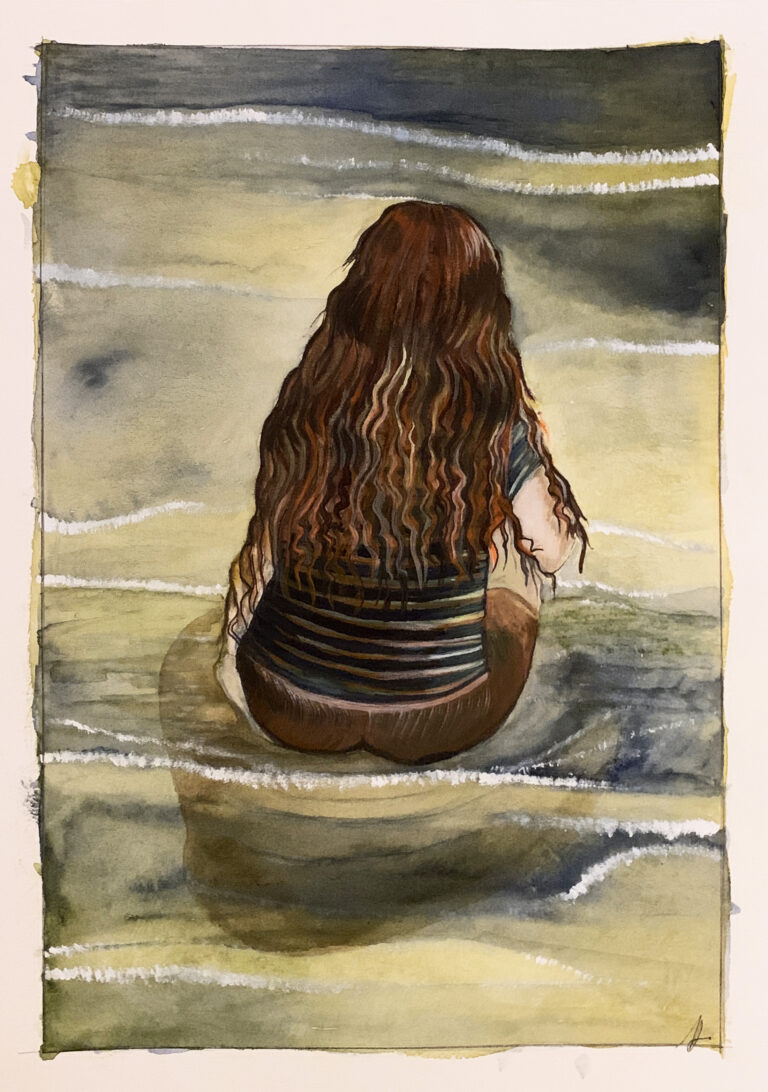
Sophie LOUCACHEVSKY
A landscape is like a face
From April 24 to May 17
“Carte Blanche” to Jean-François Peyret, who will present the watercolors of Sophie Loucachevsky.
Specializing in the promotion of geometric abstraction, the Wagner Gallery is taking a break by giving “Carte Blanche” to Jean-François Peyret, author and director.
A man of theater and culture, a friend of artists and scientists, Jean-François Peyret has chosen to present the watercolors of Sophie Loucachevsky, who was his partner for 30 years.
A director until 2018 and a Knight of the Order of Arts and Letters, Sophie Loucachevsky has spent most of her life on stage. From the Théâtre de Chaillot to the Théâtre de la Colline, including the Odéon, when she wasn’t abroad staging major shows… But it was through drawing that she began her career, after studying architecture at the Beaux-Arts. And it is with drawing that she is finding a new lease on life today.
Her subject: childhood. And particularly, childhood movements.
Without voyeurism, but with the kindness of the grandmother she has recently become, Sophie Loucachevsky never ceases to contemplate the graceful, yet clumsy, way children move, playing in the sand in search of the perfect shell… For hours on end, she captures the slightest unusual detail that gives each pose its poetic fragility.
The Wagner Gallery is presenting some thirty previously unseen watercolors, each uniquely depicting children from behind. The title of the exhibition, borrowed from Jean-Luc Godard, reflects the modesty with which Sophie Loucachevsky approaches the subject of childhood.
“You can imagine my embarrassment when Florence Wagner offered me carte blanche in her gallery. And if, as I like to say, I’m a user of the visual arts (sic), if I sometimes seek out ideas for theater, if I like to surround myself with the works of my friends and especially to hang out in the studios of painters or sculptors, I have no right to improvise as a curator, and at my age I’m not going to embark on a career as a curator (of exhibitions, that is). Yet I had to honor this invitation. I searched my inner repertoire; of course, there was Sophie Coroller who let me accompany her work, but she’s already an artist at the Wagner gallery!
So I risked a proposal: for quite some time, I had been intrigued by the watercolors Sophie Loucachevsky showed me. I was familiar with her work as a theater director; We had even collaborated recently (or in the past?) to create the Théâtre-Feuilleton at the Odéon-Théâtre de l’Europe, an adventure lasting more than a season. Since she had moved away from the theater, Sophie had returned to the old and good habit of drawing and painting. I still remember her production notebooks, where the notes she took were more drawings or sketches than words or phrases, sketches of characters or figures, generally in motion. Kinetic sketches, I can clearly see them again: this attention to movement, staging as choreography. And also the attention to costumes, a common thread, so to speak. The memory of the theater has retained Madame de Sade’s costumes at Chaillot… Everything is still there in these watercolors.
Still, this work is a far cry from the style of the Florence gallery; she had told me that these carte blanche were an opportunity to take a step back. But from there to… It was with a certain trepidation that I showed these watercolors, South African seascapes in which very young children are splashing about! With an enigmatic peculiarity: these children are seen from behind! And then came the twist (sic): Florence, visibly moved by these works, welcomed the proposal.
I said enigmatic: I couldn’t solve this enigma, and I’m not a purveyor of meaning. But coming from a woman of the theater, the gesture is remarkable: like a reversal of perspective; the director places herself on the other side, behind the characters, instead of facing them. Moreover, she doesn’t face them and erases their faces. As if it were necessary, through this reversal, to shelter herself from the drama, and leave the landscape as it is and the children out of reach.”
Jean-François Peyret
